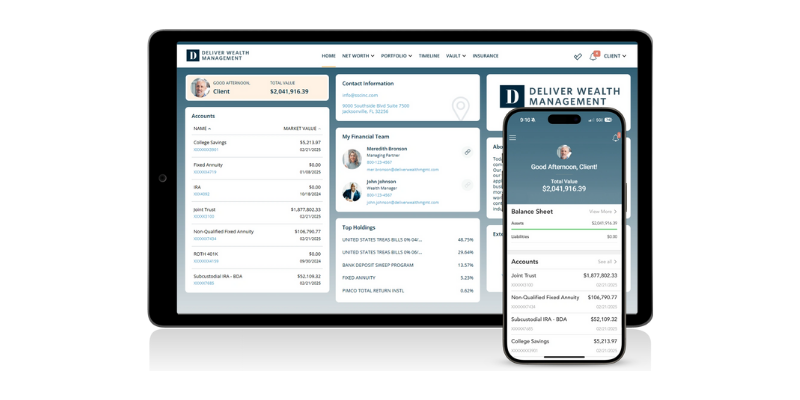Financial markets reacted turbulently to the collapse of Silicon Valley Bank (SVB) on March 10, 2023, followed two days later by the failure of Signature Bank of New York. With $209 billion in assets and $175 billion in deposits, SVB was the nation’s 16th largest bank and the second largest to fail in U.S. history.1-2
This news was alarming to savers who worried their own bank accounts could be at risk and investors who feared a wider financial crisis. To help restore confidence in the U.S. financial system, the federal government pledged to make all depositors whole and to support other banks that might face liquidity issues stemming from the rapid rise in interest rates.3
These events have drawn new attention to how banks operate and the risks they take to earn money on customer deposits, as well as the government’s role in regulating and supervising bank activities.
What is the FDIC?
The Federal Deposit Insurance Corporation (FDIC) is an independent agency backed by the full faith and credit of the U.S. government. FDIC insurance is intended to reassure depositors and offer protection in case an insured bank becomes insolvent, is liquidated, or experiences other financial difficulties. Most banks in the United States are insured by the FDIC, which protects deposits up to $250,000 (per person, bank, and account category).
When a member bank fails, the FDIC issues payments to depositors (typically up to the limits provided by law) and takes over the administration of the bank’s assets and liabilities. Generally, the FDIC will try to arrange for a healthy bank to take over the deposits of a failed bank. If no bank assumes that role, the FDIC taps a fund that is financed by premiums paid by insured banks.
Why are banks under pressure?
In its quest to bring down inflation, the Federal Reserve has raised the benchmark federal funds rate from near zero to more than 4.5% over the past year.4
Banks earn money by investing customer deposits, often in relatively safe long-term Treasuries and other government-backed bonds. U.S. Treasury securities are backed by the full faith and credit of the U.S. government as to the timely payment of principal and interest. But as interest rates rise, bonds lose value on the secondary market, which becomes a problem if banks must sell bonds before they mature. At the end of 2022, U.S. banks had booked about $300 billion in unrealized losses on bonds they planned to hold to maturity.5
At SVB, poor balance-sheet management also came into play. A California bank that catered to technology start-ups, SVB was highly — and knowingly — exposed to weakness in that volatile sector. As start-up valuations fell and venture capital funds dwindled, withdrawals increased and forced the bank to sell $21 billion in securities at a $1.8 billion loss. More than 90% of customer deposits at SVB were uninsured, which made depositors more likely to panic and pull their money once the bank’s losses came to light.6
Signature Bank’s challenges were similar in that a large share of customer deposits were uninsured — and it was a primary servicer of high-risk cryptocurrency businesses.7
What actions did the government take?
In a joint statement, the U.S. Treasury, the Federal Reserve, and the FDIC guaranteed that depositors of SVB and Signature Bank would have access to all their money. Concluding that the failures posed a risk to the financial system gave the FDIC greater flexibility to return funds that exceed the $250,000 cap. Any resulting FDIC insurance fund losses will be recovered through a special assessment charged to banks. The banks’ shareholders and unsecured bondholders did not receive any government support.8
In addition, the Federal Reserve will help ensure that all banks have enough liquidity to meet depositors’ needs — without selling bonds prematurely — through a new facility called the Bank Term Funding Program (BTFP). The BTFP allows banks to use their government bonds as collateral for one-year loans. Fragile U.S. banks borrowed $164.8 billion combined from the new BTFP and the Federal Reserve discount window, a pre-existing liquidity backstop, during the week ended March 15, breaking a record from the 2008 financial crisis.9
How will other banks be affected?
Moody’s Investor Service cut its outlook for the entire banking sector from stable to negative, due to the “rapidly deteriorating operating environment.” Lower credit ratings could push up borrowing costs and cut into earnings. First Republic Bank (FRB) was one of five banks that were put on review for ratings downgrades due to substantial unrealized losses and exposure to the risk of outflows by uninsured depositors.10 FRB’s credit rating was later cut to junk status despite a $30 billion rescue package from a coalition of the nation’s largest banks.11
The current situation is fluid, and it’s too soon to know if more distressed banks will buckle. Regulators emphasized that the U.S. financial system remains resilient and has a solid foundation, in part due to safeguards put in place during the last financial crisis.12
The Federal Reserve launched an internal review to determine what went wrong and whether regulators missed signs of trouble. This may cause officials to refocus attention on smaller institutions and strengthen those regulatory requirements accordingly.13
Are your savings protected?
If you have multiple accounts at one bank, you might check to see who is listed as the owner(s) of each account, what category it falls into, and whether it overlaps with other categories that might affect the amount that’s covered. Ownership categories consist of individual accounts, joint accounts, retirement accounts, trust accounts, and business accounts, among others.
You can’t increase your coverage by owning different product types (a checking account, savings account, or CDs, for example) within the same ownership category. A tool on the FDIC’s website (FDIC.gov) can help you estimate the total FDIC coverage on your deposit accounts.
If your assets aren’t fully insured, you might consider shifting them to increase your coverage. If you are married, for example, you could expand your total coverage up to $1 million at one bank by opening two separate individual accounts in addition to a joint account. If you have personal or business account balances that regularly exceed $250,000, you might consider diversifying your holdings between multiple financial institutions — or possibly rethink your cash-management strategy altogether.
All investing involves risk, including the possible loss of principal.




